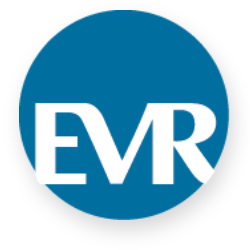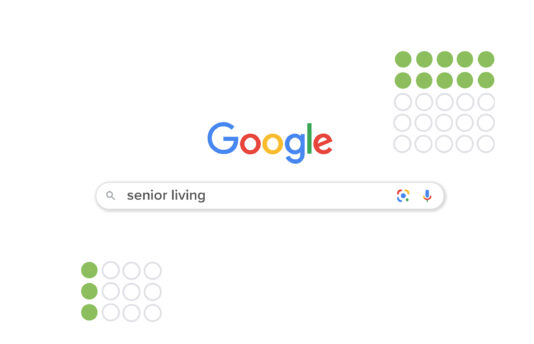Healthcare marketing continues to evolve and adapt during a time when changes in healthcare have come quickly. While issues revolving around the COVID-19 pandemic have been the hottest topics of conversation lately, there are many others that are broader in nature and will return to more prominent focus on the other side of our current situation.
Here are some things to think about:
1. You can’t engage people who don’t believe they need your services
People have an overly rosy picture of their health. In a 2020 survey conducted by The Harris Poll on behalf of the American Osteopathic Association, researchers found that of 2,032 American adults surveyed, seven out of ten rated their health-related behaviors and attitudes as good or excellent. If seven of ten people will have a problem, most people think they will be among the three who won’t. The right message is needed to reach them. Perhaps a positive spin can work better…“Let us help you stay healthy.”
2. In healthcare, ideas sell, not things and procedures.
Outside unique specialty care, much of healthcare can become a commodity. Differentiation is built around relationships and values. You may have the latest robotic surgical technology, but what will go a lot further in building trust and loyalty is the distinction that your institution treats the whole patient, involves the family in the decision-making process and is transparent in its communication.
- Foster trust.
- Connect with the community.
- Embrace ethical values by affirming core values.
- Be educational, not “salesy.”
3. Healthcare technology has advanced significantly during the pandemic.
This Becker’s article on the 10 big advancements in healthcare tech during the pandemic highlights the major changes that have accelerated in the past year and are improving patient outcomes and quality of care. Some of the highlights include:
- Mobile health apps help patients with medication management, mental health, fitness and more.
- Telehealth appointments have allowed more people than ever to see a doctor without stepping foot outside the house, thereby increasing access to care, especially in rural areas. In fact, according to one report by DrFirst, 44% of Americans used telehealth services during 2020.
- Artificial intelligence (AI) is helping streamline care in hospitals and healthcare facilities, allowing for the automation of paperwork and initial consultations with chatbots, among other things.
- Predictive analytics tools allow hospitals to predict surges during significant global and nationwide health crises based on factors such as weather, travel and more, allowing them to envision what emergency department capacities might look like.
- And remote monitoring and wearable devices allow hospitals to monitor patient vitals in real time, which will continue to grow increasingly important.
4. Speaking of apps, there are more than 300,000 health and wellness mobile apps available for download.
And with downloads of health and fitness apps growing almost 50% during the first half of 2020, the market is poised to continue its massive growth, meaning there is opportunity for hospitals to make an impact. Key questions to ask when developing a mobile app: Will it support your brand? Will it foster stickiness when the average U.S. adult uses mobile apps for over 3.5 hours daily? Is it a new way to help manage a health issue? Will it improve overall patient experience?
5. Showcasing quality measures is not the most effective way to communicate your high quality of care.
The measures used to rate, rank and recognize healthcare quality scores have become more confusing than ever. A crowd of organizations reporting quality have surfaced—Hospital Quality Alliance, Joint Commission, HealthGrades, National Research Corporation, Solucient, Press Ganey, U.S. News & World Report, Leapfrog and more. All of these organizations have their own systems of rating the quality of healthcare organizations, leaving consumers with the daunting task of interpreting complex data and trying to determine what it all really means. Most do not have the ability, time or willingness to reliably pursue this process. To lessen the confusion, introduce your own uniform quality messaging as a regular signature message in all communications. Consider a course of action to brand hospital quality in a memorable way, perhaps introducing a descriptive name to rally around (e.g., “The Gold Standard”).
6. A positive website user experience is mandatory for engagement success.
Healthcare consumers want a quick and easy online experience. Whether they’re looking to find a doctor, find an office location, schedule an appointment, pay a bill, access electronic medical records or something else, the less work they have to do, the better. Optimize your website for success by implementing the following:
- Minimalist design: Allowing for features such as instant payments, online registration and insurance info will ensure users aren’t burdened with unnecessary steps in choosing your healthcare institution.
- Inclusive design: The use of alt text, color contrast, zoom capabilities and other features will make your website more accessible to a larger group of people.
- Micro-interactions: Creating meaningful interactions with consumers through animated buttons, chat animations and calls to action will provide an engaging, more welcoming experience for the user.
- Imagery and video: According to Forrester, video results are 50x more likely to be organically ranked in Google search engine results pages than text-based content alone.
- Mobile functionality: Mobile apps, online forms, click-to-call buttons and online scheduling tools provide easy access to the things people are searching most. But with the average American spending 5.4 hours a day on their phone, making sure your website not only functions on, but is optimized for mobile is key.
- Telemedicine options: If you haven’t broken into the market of telemedicine already, get on it—yesterday. Experts predict the financial value of telemedicine will hit $106 billion by 2023.
7. Do you have a vision for involving your docs in providing effective online content?
Rules to live by: Take what you can get, make it as easy for them as possible, minimize their time, make it frictionless, leverage what you’ve got, give them comfort, be their mother hen, show them the return. So what’s the best way to do this?
Try starting with that video content we referenced in #6. Take video of doctors talking about new technologies or techniques. Do Q&A interviews with them. Alternatively, if your doctors don’t love to be in front of the camera, have them write a blog. Then take snippets from that and create type-driven text videos with voiceovers or with photos of your doctors layered in. Anywhere you can get multiple pieces of content from one larger piece, capitalize on it. Follow these five steps:
- Introduce your doctors to how they can best provide content.
- Find your champions.
- Collect topics.
- Coordinate contributors.
- Support engagement.
8. People engage with hospital social media pages by specific interests.
- Find things people want to express. Then give them the platform to do so and share with others.
- Plan organic social content. Blogs, health tips and new provider announcements are all examples of content healthcare consumers are seeking. Is there a current healthcare-related event going on in the world? Tell consumers how your organization is handling it.
- Identify ambassadors. Whether it is your providers, nurses, administrators or even partner organizations or consumers, finding shareable content is key to supplying content, spreading your message and building your following.
- Use video. With 72% of consumers preferring to learn about products or services via video and 79% of the U.S. population using some form of social media, incorporating video into your social strategy is a no-brainer. And if that weren’t enough for you, social algorithms tend to favor video over any other type of content.
9. Healthcare marketing starts with internal audiences.
- We can only promote externally what we can sell to our doctors, nurses and staff.
- Identify internal target groups and market and teach according to their jobs, preferences, intellect, etc.
- Create a value proposition and find ways to promote your concepts, such as posters, videos, events and merchandise.
- Develop a strategy for opinion leaders and dedicate a special effort to recruit them as positive influencers.
- Do your research to find out where current staff is connecting—then meet them there.
- Offer to meet with teams face to face to connect, help spread messaging and discover new platforms.
- Use internal resources, such as an intranet, to spread company-wide messaging, especially by engaging senior leadership.
- Cultivate your most enthusiastic and willing internal ambassadors.











